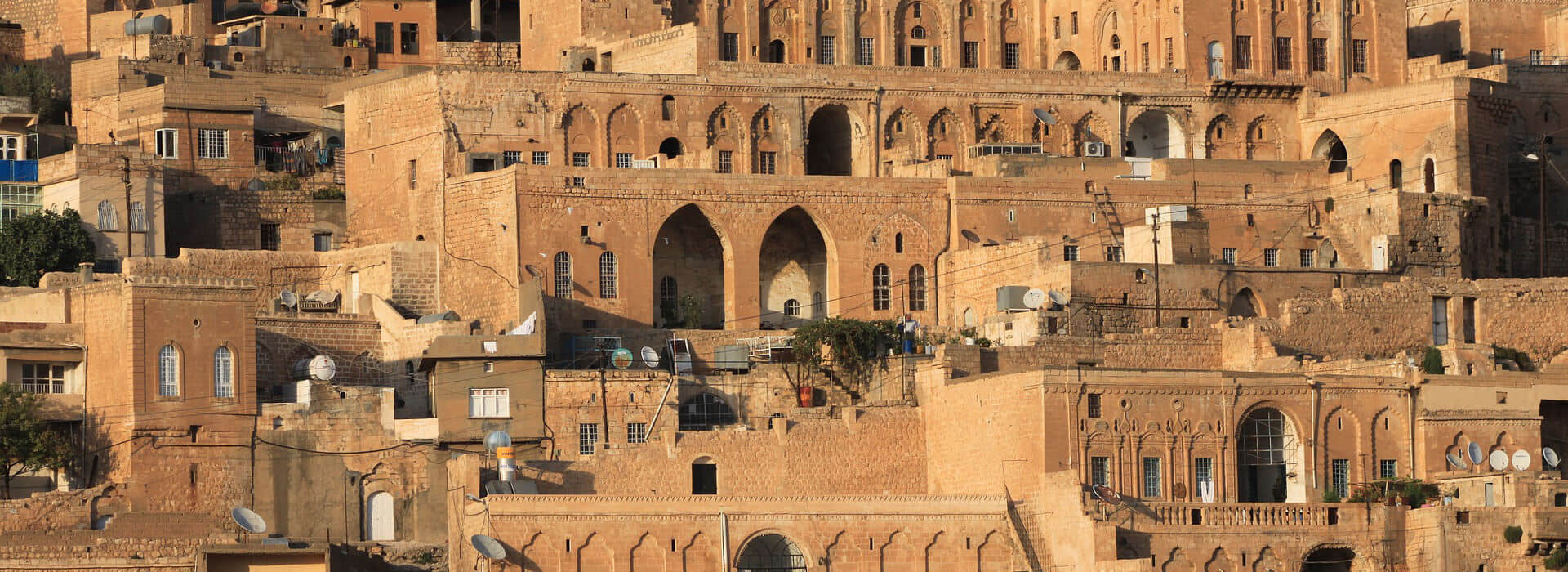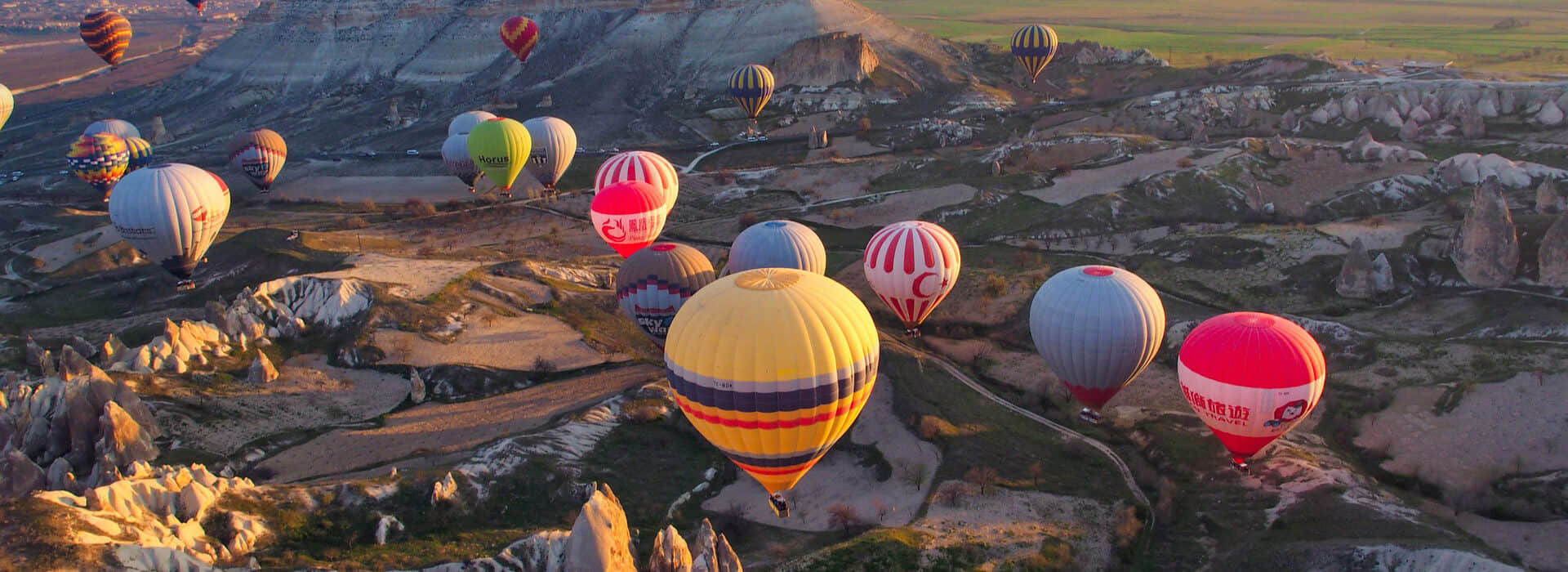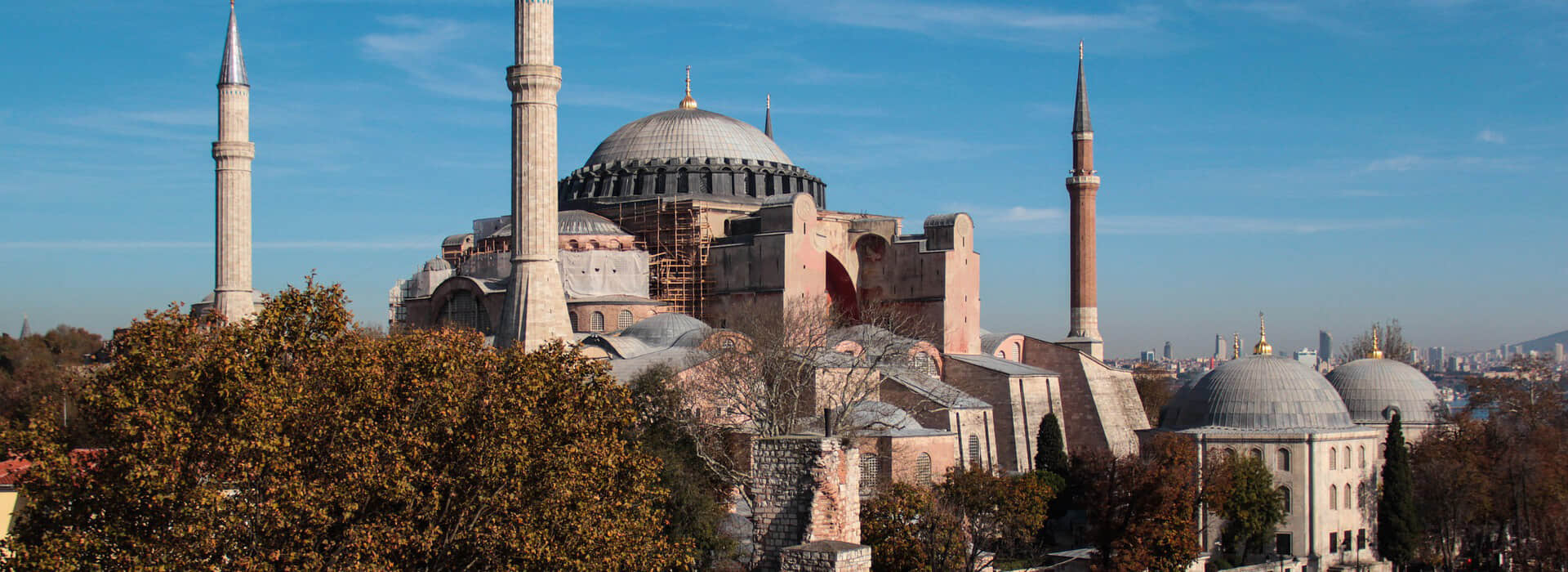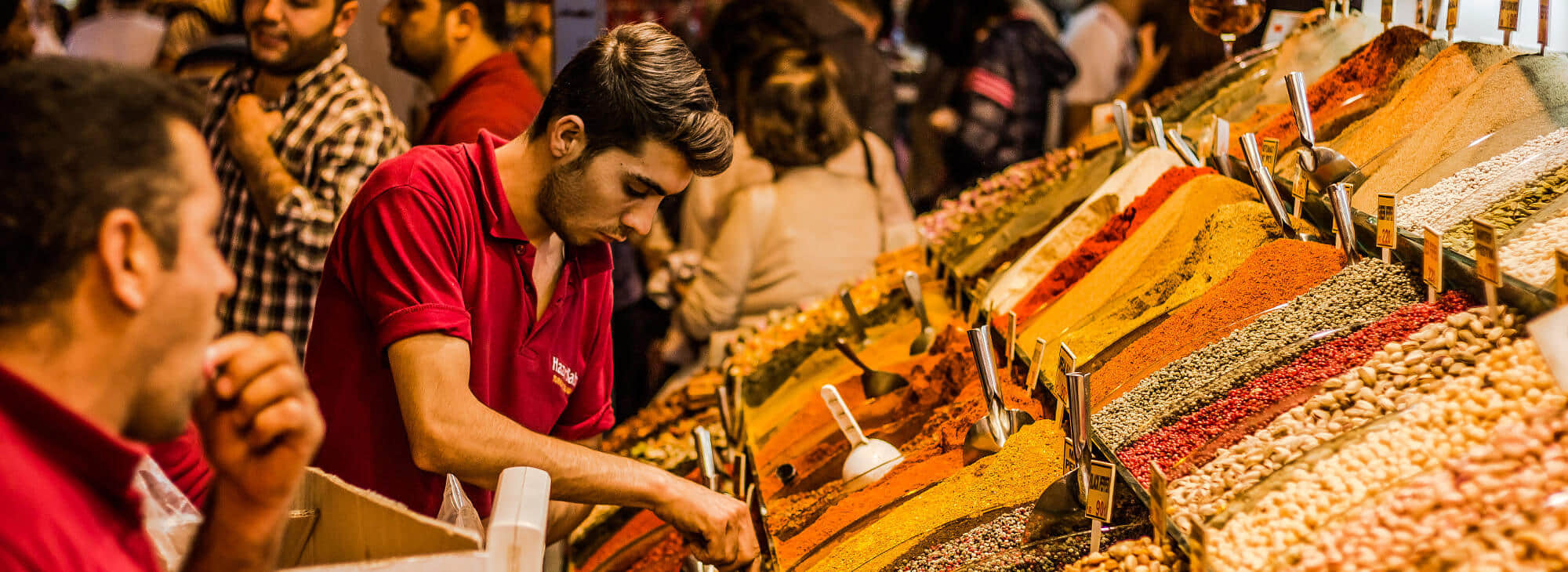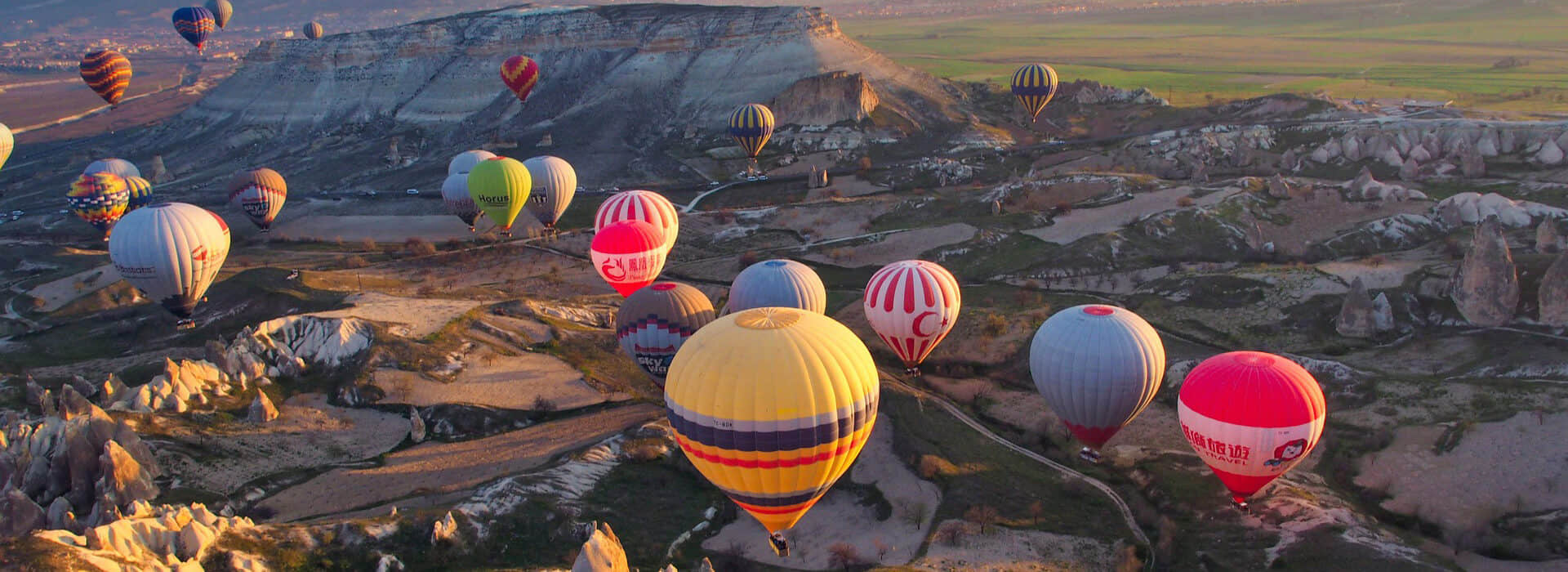10 Best Cities to Visit in Turkey
Filled with stunning natural beauty and an array of well-preserved architecture, Turkey is an extraordinary country to visit. From the bustling streets of Istanbul to the quiet, Blue Flag certified beaches in Mugla; there is something for everyone to enjoy in the country’s majestic cities.
Many of Turkey's cities, even those known today as modern centers of business and industry, have ancient roots, and hold on to old town districts replete with the fine architecture from older eras, whether Ottoman, Byzantine, or Classical. That makes Turkey is one of the best places for any history buffs. With so much to see and do in Turkey, visitors to this incredible country will find it hard to fit everything into their itinerary. To help you on your way, here are the 10 best cities to visit in Turkey.
#1. Istanbul
As the cultural and financial center of Turkey, Istanbul is the city of the past, present and future.
In 658 BCE, Greek settlers founded a city called Byzantium on the headland between the Golden Horn and the Sea of Marmara. In 330 AD, Constantine moved the capital of the Roman Empire here, which was originally called New Rome, but was soon named after its founder Constantine - Constantinople. In 395 AD, the Roman Empire was divided into the Eastern and Western Roman Empires, and Constantinople became the capital of the Eastern Roman Empire. It became the capital of the Ottoman Empire in 1453. It was the third capital of the Ottoman Empire. The city's historic district was declared a UNESCO World Heritage Site in 1985.
It is the only city where you can go from Europe to Asia in just under 15 minutes. It is possible to find all kinds of things in Istanbul; historical places, all kinds of foods, all manner of activities, shopping places, great scenery, and much more.
#2. Antalya
Antalya is the largest city in the Mediterranean area, also known as the Riviera in Turkey. The city enjoys more than 300 days of sunshine annually, stunning beaches, beautiful resort towns, beautiful historic sites, natural splendor, great shopping opportunities, and countless seaside bars and restaurants.
Founded in the second century BCE, it was an important port in the Eastern Mediterranean during the Eastern Roman Empire and the Ottoman Empire. It is bordered by the clear Mediterranean Sea to the south and the lush Taurus Mountains to the north.
The magnificent ruins of Termessos, Perge and Aspendos are tantalizingly close, and have also given up many thousands of artifacts now on display at the excellent Antalya Archaeological Museum. Don’t miss Kaleici – the Old Town. Here you can see the Hadrian's Gate from Roman era, a medieval tower clock along with city walls and sea fortifications, old Mosque and cute bazaar.
#3. Izmir
Izmir is the third largest city in Turkey and the second most important port on the Aegean coast. Along with Alexandria in Egypt, it was feted for centuries as a Mediterranean cosmopolitan hub, where Turks, Greeks, Jews, and Armenians all thrived.
With a lovely waterfront promenade that is full of great restaurants, bars, and cafes, it is a fun city to visit; its multicultural heritage means that there is lots of delicious food to sample.
The fantastic bazaar is amazing to wander around and there are lots of old churches and mosques for you to visit, as well as a brilliant history and art museum. Lying on the Aegean Sea, Izmir has some great beaches on offer and its welcoming population will make you feel at home in no time at all.
#4. Mugla
Mugla is located in the Aegean region of Turkey, known for its historical sites, beaches and sunshine. The city's coastline and archaeological sites attract many local and international tourists. A total of 106 beaches, 7 marinas and 4 yachts in Mugla have received Blue Flag certificates in 2021.Blue Flag certification is one of the world’s most recognized voluntary awards for beaches, marinas, and sustainable boating tourism operators. The blue flag symbolizes a clean, well-maintained, safe and modern environment. Beaches represent clean water and environment.
Having hosted many civilizations from ancient times to the Ottoman Empire and on to the Republic Period, the city is home to many historical places that should be visited.
#5. Eskisehir
Eskisehir is one of the most dynamic and modern cities in Turkey. This is an excellent destination for those looking for a city tour full of entertainment, parks, gardens, museums and historic sites.
Eskisehir means old city in Turkish. In fact, the Phrygians built the first city here around 1000 BCE, and it is preserved in the Archaeological Museum of Eskisehir. There are many Phrygian relics and statues. In the 4th century the city moved to the northeast by about 10 kilometers.
Ancient geographers called Eskisehir one of the most beautiful cities in Anatolia. The city of Eskisehir has some hot springs with sulfur content. There is also a meerschaum museum in the city, which is used to make high-quality meerschaum pipes.
Odunpazarı is also where you'll find Eskişehir's newest attraction. The OMM (Odunpazarı Modern Museum) art gallery holds a permanent collection of modern art, comprising sculpture and installations as well as paintings, and hosts temporary exhibitions of big names in the contemporary art scene. It's the most important private art gallery outside of Istanbul.
#6. Mardin
Mardin is one of the oldest cities in Upper Mesopotamia, located in the Anatolia region of southeastern Turkey.
The city is an ideal destination for travelers who wish to experience the perfect blend of unique cultural and historical influences. Located where major civilizations like the Sumerians and Babylonians came to power, Mardin has a complex history. Mardin was historically known as "Izala". It was once absorbed into the territory of the Assyrian Empire, and was later incorporated into the Achaemenid Empire of Persia. It was still called "Mt. Izala" during the Assyrian Christian period. In the 11th century, the Seljuk Turks set about making it their own but were thwarted by the arrival of the Artuqid Turkomans in the 12th century.
Today Mardin has a unique atmosphere and flavor due to this diverse ethnic and religious background. Mardin’s most prominent landmark is Mardin Castle, the ancient fortress at the very top of the hill on which the city was built. The Central Mardin is teeming with religious architecture – both Muslim and Christian. Ulu Cami, or the Grand Mosque is the oldest mosque in the city. It was built by the Seljuks in the 11th century. Latifiye Mosque which was constructed in 1371, also during Artukid rule, is most notable for its entrance gate. It’s been entirely carved in floral motifs and geometric patterns with almost machine-like precision.
#7. Canakkale
Çanakkale is a port city in western Turkey and the capital of Çanakkale Province. It is located on the eastern shore of the narrowest part of the Dardanelles, at the mouth of the Koca River. The legendary story of the Trojan wars took place here; the Ottoman sultans built defensive castles that still lord over the coast today; and in the modern era, this is the somber site of World War I's Gallipoli Campaign, the most famous battle between Allied forces and the Ottoman army of the war.
Çanakkale's waterfront is home to the wooden Trojan horse model used in the 2004 Wolfgang Petersen movie Troy.
The coastline hugging the Dardanelles Straits is home to plenty of lesser-seen ruins and monuments.
For those looking to splash about in the Dardanelles, the only beach where you're allowed to officially swim on the Gallipoli Peninsula is Brighton Beach near Kabatepe village.
#8. Bursa
Bursa was one of the capitals of the Ottoman Empire. Reflecting the early days of Ottoman culture, the city combines historical sites and hot springs with skiing on the slopes of Uludag.
It is a city in northwestern Turkey and the capital of Bursa Province. It is the fourth largest city in the country and is located at the northern foot of the Ulu Mountains. It was a military location when it was ruled by the Byzantine Empire in the 14th century . It was also the religious and cultural center at that time; in the 17th century, it was one of the three capitals of the Ottoman Empire, the second largest city after Istanbul.Most visitors will want to concentrate their sightseeing in the city's central districts. The 20-domed Grand Mosque, exuberantly tiled interiors of both the Yeşil Mosque and tomb, and the colorfully decorated mausoleums of the first Ottoman Sultans within the Muradiye Complex are the most famous monuments from Bursa's imperial reign.
At the city's core is the massive Covered Market, where multiple hans (caravanserais) and bedestens (warehouses) showcase Bursa's heritage as a Silk Route trading point. Don't miss the Koza Han with its numerous silk shops still continuing the tradition.
Foodies are here to dine on Iskender kebab in the city where it was invented.
#9. Edirne
Situated between the Greek, Bulgarian and Turkish borders, this beautiful city is famed for its many mosques, the elegant domes and minarets which dominate the panoramic appearance of the province. Edirne is home to the world-famous annual Kirkpinar Oil Wrestling Tournament. The city is one of the oldest settlements in Turkey, dating back to the Neolithic period. It was the second capital of the Ottoman Empire. According to Greek mythology, Orestes, the son of Agamemnon, founded a city called "Orestias". The city was later rebuilt by the Roman Emperor Hadrian in an ancient Thracian settlement. Hadrian carefully built the city and renamed it "Hadrianopolis", which is "Adrianopolis" in Greek.
Kirkpinar Oil Wrestling Tournament was held in late June or early July. Kirkpinar is a kind of freestyle wrestling in which the wrestler’s body is smeared with olive oil, it was held in Edirne since 1360.
The main tourist attraction people come to see is the Selimiye Mosque, agreed by most historians to represent the epitome of Ottoman architectural design. The Edirne Synagogue is a fine example of early 20th-century architecture, and its cheerful yellow-painted exterior looms over the surrounding buildings.
#10. Gaziantep
Gaziantep is the largest city in southeastern Turkey, the sixth largest city in Turkey, and one of the earliest settlements in Anatolia. Gaziantep Fortress is one of the best examples of fortresses in Turkey, and therefore deserves special attention. Gaziantep is Turkey's baklava center. Gaziantep's sweet treats are famed throughout the country. There's plenty to discover beyond the sugar-hit though.
One of the prime tourist attractions is the Gaziantep Zeugma Mosaic Museum. Highly contemporary and beautifully conceived, the museum houses one of the world's most important collections of Roman period mosaic floor art, all rescued from the nearby Belkis-Zeugma archaeological site before it was submerged under the waters of the Birecik Dam.
Don’t miss the old town area. Its multitude of baklava shops and compact bazaar alleys, stuffed full of traditional craftwork stores and historic coffee houses, could consume a full day of your time.
